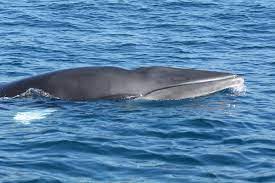Whales

Common minke whale
It is the smallest species of the rorquals and the second smallest species of baleen whale. Although first ignored by whalers due to its small size and low oil yield, it began to be exploited by various countries beginning in the early 20th century. As other species declined larger numbers of common minke whales were caught, largely for their meat. It is now one of the primary targets of the whaling industry. There is a dwarf form in the Southern Hemisphere.
This species is known in the fossil record from the Pliocene epoch to the Quaternary period (age range: 3.6 million years ago to present day).
Some curiosities :
The origins of the species’ common name are obscure. One of the first references to the name came in Henrik Johan Bull’s account of his 1893–95 voyage to the Antarctic, when he mentioned catching a small whale “called in the Arctic language a Mencke whale, after a German who accompanied Mr. Foyn on some of his voyages.”
According to the British writer John Guille Millais (The mammals of Great Britain and Ireland, 1906, vol. 3, p. 279), “Minkie was a Norwegian seaman who was always calling ‘Hval’ at whatever backfin he saw. He is now regarded as the type of the ‘tenderfoot’ at sea. Norwegians often refer to any small whale with some contempt or amusement as a ‘Minkie’ or ‘Minkie’s hval’.”
The American marine biologist and painter Richard Ellis, citing the Norwegian scientist Age Jonsgård, stated “that Meincke was a German laborer working for Svend Foyn, inventor of the grenade harpoon. Meincke ‘one day mistook a school of this whale species for blue whales…. most probably he made this mistake during Foyn’s whaling operations in the Varanger Fjord between 1868 and 1885.”


Fin whale
The fin whale (Balaenoptera physalus), also known as the finback whale or common rorqual is a species of baleen whale. It is the second-longest cetacean on Earth after the blue whale. The largest reportedly grow to 26 m (85 ft), with a maximum recorded weight of 77,000–81,000 kg (170,000–179,000 lb). The fin whale’s body is long and slender, coloured brownish-gray with a paler underside.
Some curiosities :
The body is relatively thin with a slender rostrum and large hook-like dorsal fins that are situated in the upper fourth of the body. It has an elongated ridge on its back, and around 350 to 400 baleen plates. Like all rorquals, the fin whale has grooves between the tip of the lower jaw and the navel.
Among whale species, the fin whale is exceeded in size only by the blue whale. However, right whales can also outweigh them on average and maximum weights. Adults usually average 40,000 to 50,000 kg (88,000 to 110,000 lb) in weight.[36] Males have a mean length of 21 m (69 ft), and females of 22 m (72 ft).
They are sexually dimorphic, with females generally being longer and heavier than males.[37][38] The largest specimens can attain lengths of over 26 m (85 ft)[39] and weights of 77,000–81,000 kg (170,000–179,000 lb)

Animals
The Algarve is a paradise for lovers of marine life, where you can see dolphins, turtles and a variety of seabirds.






